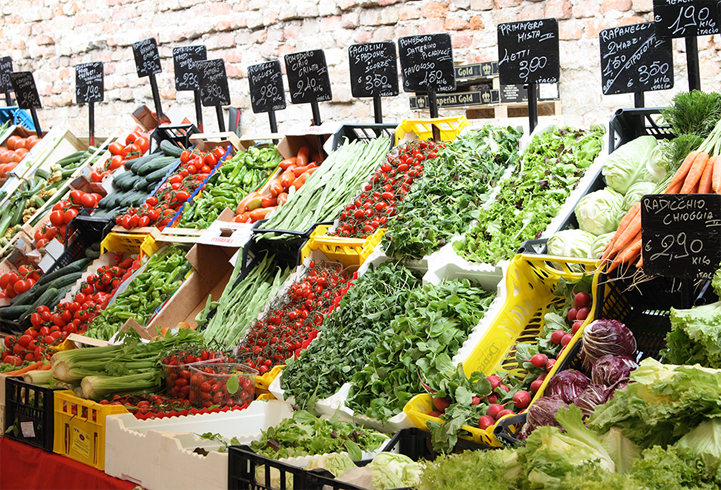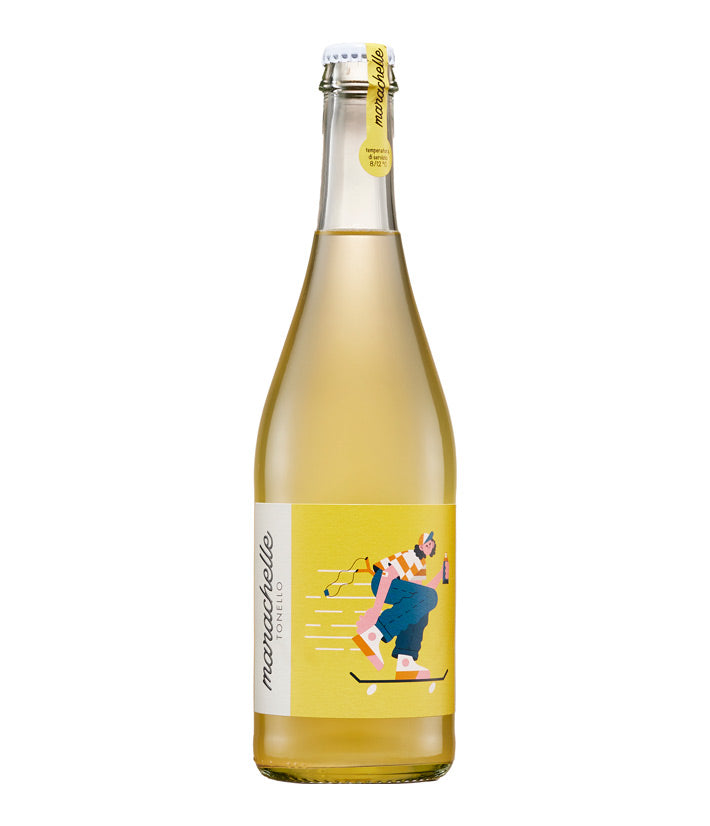
What is Italian Food?
The popularity of Italian food throughout the world is clearly demonstrated by the number of Italian restaurants that abound and thrive in all corners of the globe. Few, if any, other national cuisines enjoy the same popularity. An Italian tourist finding himself in any random city abroad could not help but feel quietly proud at such an overwhelming demonstration of adoration for the food of his homeland. Our Italian tourist would also feel no doubt perplexed on seeing what are sometimes curious local interpretations of Italian dishes. The way in which voracious local diners compose their Italian meals might be a further cause of surprise to our Italian tourist – the idea of someone sipping a cappuccino alongside their plate of pasta is stomach churning for most Italians. The flattered but confused Italian tourist might then ask himself the question: ‘Do these people really know what Italian food is?’ If we were to ask the same question back to our Italian friend: does he really know what Italian food is? The answer would be: ‘No!’ For the simple reason that Italian food does not exist.
A small land, roughly one twenty-fifth the size of Australia, Italy is variegated in climate, geography and topography like few other nations in the world. Its soils are fertile and agriculture comes easy. From the dramatic Dolomites of Alto Adige in the north to the Mediterranean-bathed coasts of Sicily in the south, Italy has just about every climatic, geographic and topographic situation possible: mountains, hills, plains, rivers, lakes, seas, bracing winters and oppressive summers. Within this context, an infinite variety of crops can be grown, animals farmed, fish caught and game hunted. This is the foundation of Italian cooking: an enviable abundance and variety of raw ingredients. Italian dishes are typically built around few high-quality ingredients treated with simple techniques; complicated technical elaborations are not part of traditional Italian cooking. Historically, Italian cooking has evolved in the home kitchen, the domain of the housewife and not the professional chef; this is cucina casalingha.
What really distinguishes Italian cooking, other than its essential simplicity, is its marked regional character. Every single Italian region has its own unique bounty of produce; neighbouring regions may have in common certain ingredients but others will be different. The result is an infinite possibility to combine ingredients and create dishes that may appear similar but are actually very different, these differences become more marked as the distance from one region to another increases. The Sicilian dish of pasta with sardines, pasta con le sarde – sardines, wild fennel and sultanas – combines flavours of the sea and the arid Sicilian inland with Arabian elements, in this case dried sultanas. This dish could not be more different to the Tirolese canederli (dumplings) of Alto Adige, which combine the hearty ingredients of potatoes and speck. These are but two examples – among thousands – of the regionality of Italian cooking that clearly demonstrate how different the foods from one region to another can be. Sicilian food with its sweet and sour elements may seem Middle Eastern, while the food of Alto Adige with its plain robust flavours evokes the cooking of Germany, they have little in common but are both Italian.
The strongly marked regional character of Italian cooking derives not only from the climatic and geographical differences from one region to another, but also from Italy’s complex and unstable political and social past. The history of Italy is a history of rival city states and duchies seeking to affirm their power and influence over each other. There is then a long list of foreign conquerors, Greeks, Arabs, Spanish, French, Germans and Austrians have all invaded Italy’s fertile lands, bringing with them their culture and language. Residues of this are still visible in Italy today: the French words present in the Piedmontese dialect; the Catalan language spoken in the Sardinian city of Alghero; and what of Milan’s emblematic dish, cotoletta alla milanese, does it derive from the Austrian ‘wiener schnitzel’? Italy’s tumultuous political and social history has meant that contemporary Italy is a nation of fragmented peoples, each with their own different cultural history. To this day, an Italian’s sense of belonging and identity is first and foremost to his place or region of birth, more than to his country. This elevated sense of local parochialism is known as campanilismo – from campanile (belltower), the symbol of belonging to one’s town of birth. It is the cause of persisting rivalries between cities and regions, ensuring that the concept of regionalism remains stronger than that of nationalism. The cooking of Italy reflects this.
The combination of sweet and sour, agrodolce, so common in Sicilian cooking is more akin to the Middle East than the rest of Italy. Calabrian cooking is unique in Italy for its wide use of chilli. The cooking of Puglia is known for its wealth of vegetables and legumes. The tomato, itself a non-native crop, has found its home in the cooking of Campania, where it is enjoyed alongside the unique mozzarella di bufala. Tuscan food is light on vegetables – the earthy and ubiquitous cavolo nero being an exception – and rustic and rich with meat and game, as well as dried beans. The sweet fragrance of pesto evokes Liguria, where basil reigns over local preparations. Pork in all its interpretations, fresh or preserved into ham, along with egg pasta and Parmigiano cheese are the symbols of Emilia. Lombardia is known for its rice, while Piemonte rivals France for the variety of its cheeses.
The Mediterranean flavours of olive oil and tomatoes, so loved outside of Italy, are typically southern. As we move north, flavours are less sun-filled, olive oil gives way to butter, robust root vegetables prevail over the sun-loving tomato, and fresh egg pasta in Emilia-Romagna and Piemonte is favoured over the typically southern dried pasta. In Lombardia rice is a favoured carbohydrate, as is polenta across the foothills of the Alps and Dolomites in Italy’s extreme north. Then there is the contrast between the coast and inland, fish or game and farmed animals. The beauty of baccalà (salt cod) and stoccafisso (dried cod) is that they give a taste of the sea where there is no sea. It is no coincidence that one of Italy’s better-known baccalà recipes is from the inland city of Vicenza. Here the fish is cooked slowly in milk with onions, the perfect foil to the salty creaminess of this dish being the bland polenta, a northern specialty made from boiling cornmeal in water, with which it is always accompanied.
The local, rather than national, allegiances of Italians ensure that inter-regional, or even inter-city, culinary rivalries remain strong. If you ask someone from Bologna what their favourite food is, they will confidently reply: ‘The food of Bologna, of course!’ Even if they do like the food of another region, it is unlikely that they will acknowledge this. This phenomenon of inwardness is described in Italy as to guardare il proprio orticello, to only be interested in one’s own little vegetable patch. This regional outlook is an inhibiting factor in the creation of a national cuisine that goes beyond regional boundaries. Advocates of a truly national cuisine in Italy urge young chefs to break free of their regional boundaries and to be courageous in the blending of ingredients from different regions.
Unlike France and more recently Spain, Italy has never had a national cuisine. Paul Bocuse, in France, was the creator of a culinary movement, nouvelle cuisine, which became national. The figure of Bocuse was so influential that he managed to inspire an entire generation of chefs who embraced his teachings. The same thing can be said of Spain, where Ferran Adria’s ‘molecular’ cooking inspired a nationwide movement of followers. That both France and Spain have a historically milder sense of regionality than Italy has made it easier for such influential culinary leaders to emerge. The patriarch of modern Italian cuisine, Gualtiero Marchesi, himself struck by the nouvelle cuisine of Paul Bocuse, was determined to create a similar national culinary movement in Italy. Marchesi modestly referred to his own movement as la mia grande cucina Italiana, my great Italian cuisine, but it never gained the following he hoped and fizzled into a purely personal interpretation of Italian cuisine. Bocuse was aware of Italy’s great culinary potential when he affirmed that ‘the hegemony of French cooking will only last until Italian chefs become aware of the greatness of the patrimony of produce that they have at hand as well as the infinite richness of their cultural traditions’. With these words, Bocuse concisely summed up why Italian cooking remains regional. He also alludes and pays tribute to the wealth of the regional character of Italian cooking.
Ironically, it is on the menus of Italian restaurants outside Italy that there is a semblance of an Italian cuisine, where flavours and ingredients from different regions are blended, albeit in a rudimentary way. This is why our Italian tourist is perplexed. He encounters ‘Italian’ dishes that he would never see at home in Italy, the emblematic example being the infamous ‘spaghetti Bolognese’, a global bestseller. In Italy this dish does not exist. The name of the dish implies it comes from the city of Bologna, with the meat sauce, ragù, being a local specialty. In Bologna, this sauce is only ever served with fresh egg tagliatelle. Abroad, the Bolognese ragù is generally served with dried spaghetti. This is a form of pasta that has no historical link to the cooking of Bologna. With the break of tradition and the simple combination of ingredients from different regions, an Italian classic that does not exist in Italy has been created.
